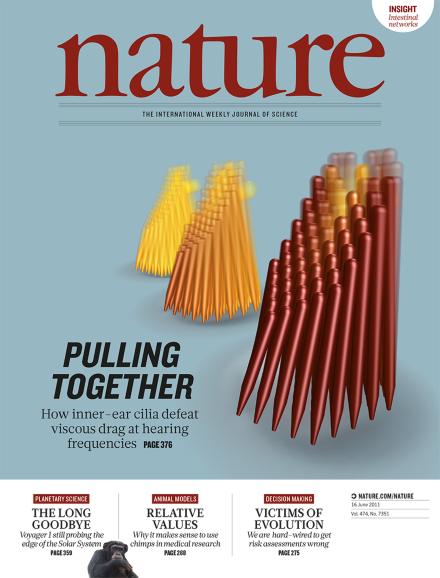Volume 474 Issue 7351, 16 June 2011
Editorial
World View
Research Highlights
Seven Days
News
News Feature
Comment
Books & Arts
Correspondence
News & Views
Editorial
Review Article
Article
Letter
Feature
-
Fieldwork: Close quarters
Career Guide:

